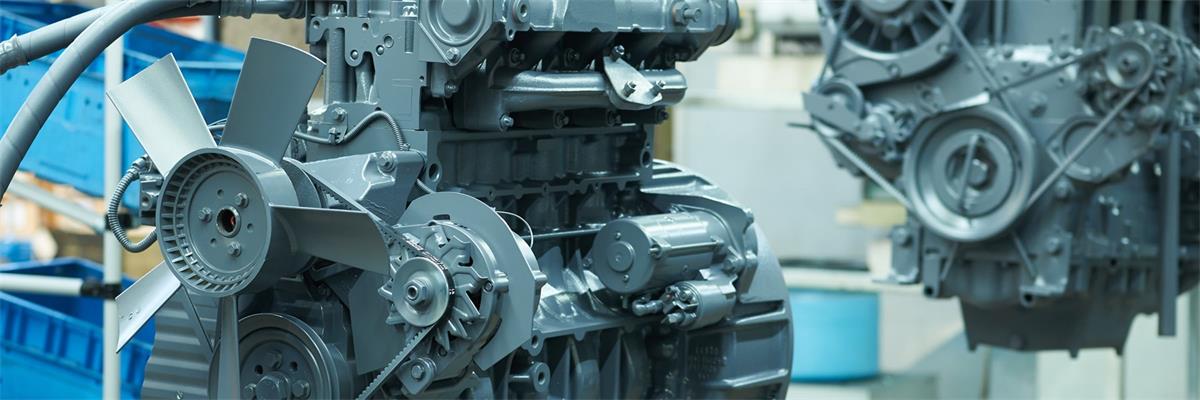
Engine overheating means that the temperature of the engine exceeds the maximum operating temperature (80-90℃), and sometimes boiling occurs. Analyzing from the main structure of the diesel engine cooling system and its heat dissipation principle, the main causes and elimination methods are common in the following situations:
1. Insufficient cooling water causes diesel engine overheating.
The heat in the engine body is mainly taken away and dissipated by cooling water. If the cooling water is reduced due to leakage or evaporation of the water tank or water pipe, the natural heat will be reduced, and the heat accumulated in the engine will be too much, resulting in engine overheating.
Judgment and elimination method
Check whether the water tank and external pipes are leaking. If there is a leak, it indicates that the engine overheating is caused by leakage, and the leak should be eliminated in time. If there is no leakage, you can open the radiator water cap to observe whether the cooling water is sufficient. Most of the time, the engine overheats due to the lack of cooling water for a long time, which should be replenished in time.
2. The fan belt is too loose and slips
The cooling water circulation speed slows down and the engine overheats. The cooling intensity of the diesel engine depends on the fan speed. If the fan drive belt is too loose and slips, it will inevitably cause the power transmission efficiency to decrease, the fan speed to decrease, the cooling intensity to decrease, and the water pump speed to decrease, the displacement to decrease, so that the cooling water flow rate will decrease, and the heat cannot be taken away quickly, resulting in poor heat dissipation of the diesel engine.
Judgment and elimination method
When the diesel engine stops working, move the fan blades by hand. If the fan can be moved to slip, it means that the fan belt is too loose to cause poor heat dissipation and should be adjusted. Adjust the belt tensioning device to achieve a reasonable tension. The specific standard is: after adjustment, press the belt with a thumb with a force of 29-49N (3-5kg) between the generator and the fan wheel, and it is appropriate to produce a deflection of 10-20mm.
3. Poor heat dissipation caused by thermostat failure
The thermostat is located at the water outlet of the engine. Its function is to adjust the cooling intensity. When the temperature of the diesel engine is low when it is just started, it effectively cuts off the large circulation water circuit and automatically connects the small circulation water circuit, reducing the heat dissipation and causing the diesel engine temperature to rise quickly; when the diesel engine has been running for a period of time and the temperature rises to a certain temperature, the thermostat will automatically open the large circulation and close the small circulation, increasing the heat dissipation to keep the diesel engine water temperature within a certain range. If the thermostat is damaged and the large circulation water circuit cannot be connected, the cooling water circulation will be poor, and the diesel engine will overheat due to poor heat dissipation.
Inspection and troubleshooting methods
Remove the thermostat and put it in hot water. When the temperature reaches about 70℃, the main valve should start to open, and it should be fully opened at 80-86℃. The valve height is generally not less than 9mm. If it does not meet the requirements, it should be repaired or replaced in time.
4. Too much scale in the cooling system
In severe cases, the water circuit is blocked, resulting in poor heat dissipation of the engine. Diesel engines that have been used for a long time are prone to thick scale accumulation in the cylinder and radiator, resulting in poor heat dissipation of the diesel engine.
Chemical cleaning of the cylinder and radiator. Commonly used chemical cleaning fluids include 8% caustic soda solution, 10% sodium carbonate solution and 2.5% hydrochloric acid solution. When using the first two cleaning fluids, the solution should be retained in the cooling system for 10 to 12 hours; when using the third cleaning fluid, the engine should be started immediately after injection and run at a low speed without load for 1 hour. During the cleaning process, the thermostat should be removed; after the cleaning fluid is released, the drain switch should be removed in time to remove the dirt, and then the engine's water jacket and radiator should be flushed with clean water in the countercurrent method until the outflowing water is completely clean; when flushing, the water pressure should be controlled within 30kpa.
5. Poor heat dissipation caused by delayed injection
When the injection advance angle is too small, most of the combustion process is transferred to the expansion work, the volume above the piston increases, the contact area between the flame and the cylinder wall increases, and the absorbed heat also increases, thereby reducing the utilization rate of thermal efficiency, increasing the exhaust temperature, and increasing the heat transferred to the cooling water, causing the engine to overheat.
Judgment and elimination method
If the engine is weak when working, the sound is muffled, the cooling water temperature is high, and the exhaust pipe temperature is abnormally high, it means that the engine overheating is mainly caused by the injection advance angle being too small, and the injection advance angle of the diesel engine should be checked and adjusted.






